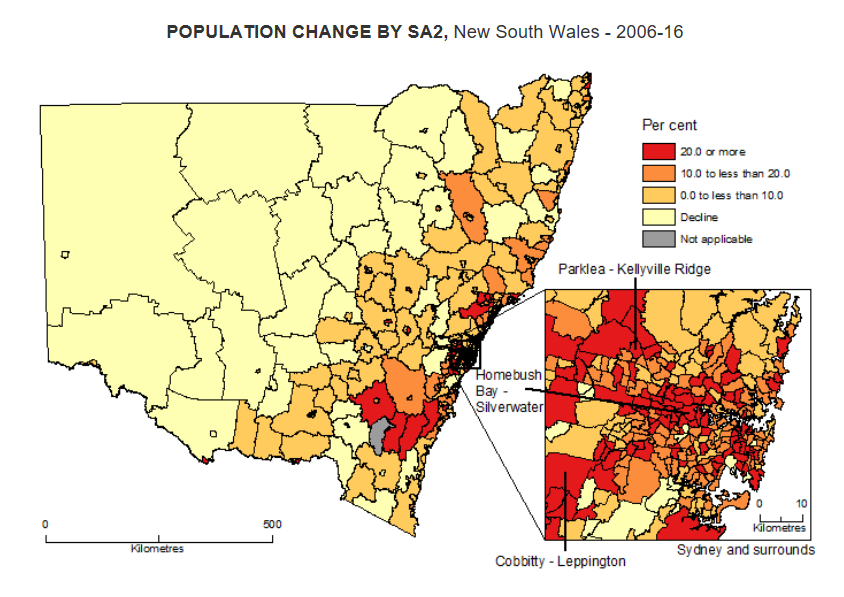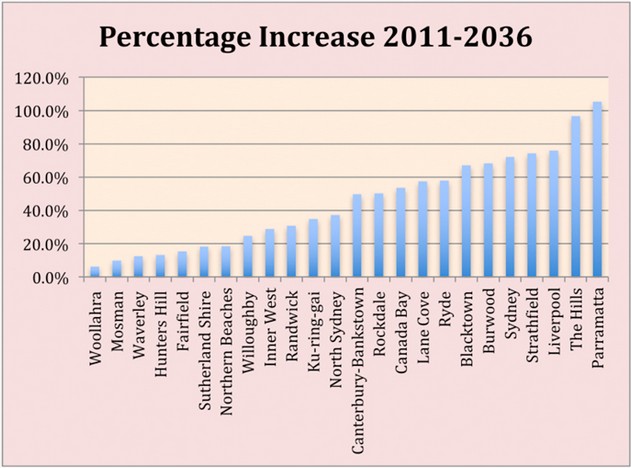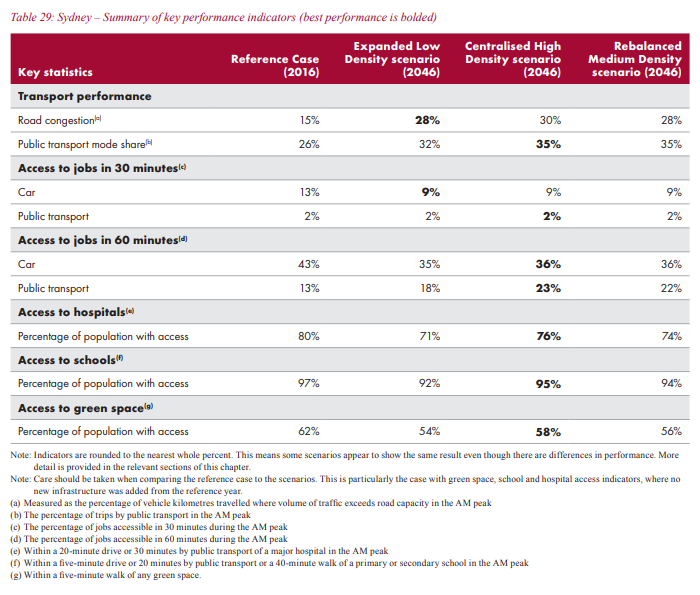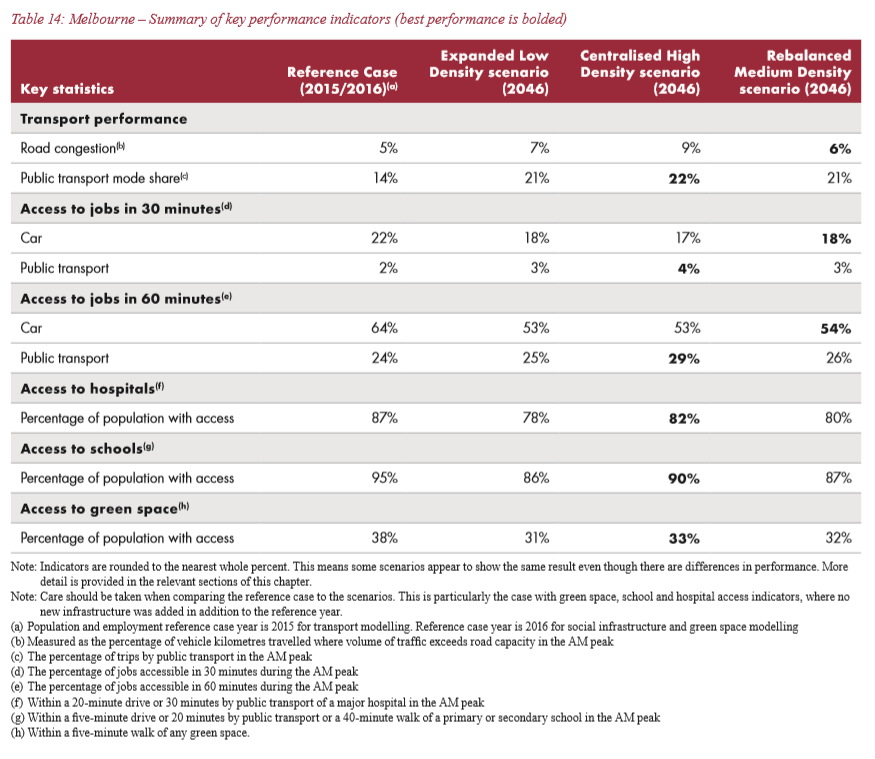In March, The ABC reported that Western Sydney residents were being cooked alive as the urban ‘heat island effect’ – via the loss of green space from urban infill – sent temperatures soaring well above coastal areas of the city.
This report came as Western Sydney has experienced the lion’s share of Sydney’s population growth in the decade to 2016:

With Western Sydney also projected to receive a whopping one million extra people over the next 20-years, courtesy of mass immigration:

All of these extra people into Sydney obviously means further density, an exacerbation of the heat island effect, and rising temperatures.
On Wednesday, Roads Online published an article on the loss of green space across the City of Melbourne as rapid population and the associated density and development has chewed-up the “urban forest”:
The impact of climate change, population growth and increasing urban density on City of Melbourne’s ‘urban forest’, for instance, is well-documented by the City…
The urban forest comprises all of the trees and other vegetation – and the soil and water that supports it – within the municipality. It includes everything from parks, gardens, river and creek embankments, green walls and roofs and more. Not only is it aesthetic, but it serves as a critical part of the city’s ecosystem services, such as air and water filtration, shade, habitat, oxygen, carbon sequestration and nutrient cycling.
In 1988, with a population of 39,512, City of Melbourne’s area included 24.6 per cent green cover – or tree canopy cover. By 2009, the City’s population increased to 94,341 and its green cover reduced to 13.6 per cent. [Acting Lord Mayor] Cr. Wood says these green spaces started disappearing once the city’s population grew and privately owned land was developed to facilitate that growth.
“Sites that might have once had a single property on them are being developed into apartments. House sizes are shrinking and 80 per cent of people in City of Melbourne now live in apartments”…
If action isn’t taken to address Melbourne’s decreasing urban forest, the City expects to lose 27 per cent of the trees within its district in the next 10 years. In 20 years, the City anticipates 44 per cent of its trees will disappear.
…green spaces within the city have a significant role to play in reducing environmental impacts such as the urban heat island effect – the heat impact human activities have on an urban or metropolitan area.
Let’s not forget that Infrastructure Australia’s recent report projected that access to green space will be unambiguously reduced in Sydney and Melbourne as their populations soar to 7.4 million and 7.3 million respectively by 2046 on the back of mass immigration, irrespective of whether either city builds up or out:


Both cities will also suffer from increased traffic congestion, as well as reduced access to jobs, schools and hospitals.
Clearly, maintaining green infrastructure in both Sydney and Melbourne is not consistent with the projected explosion of both cities’ populations, along with planning rules that force increased population density.
Residents are unambiguously facing rising temperatures and a degraded quality of life as mass immigration is force-fed into both cities.

